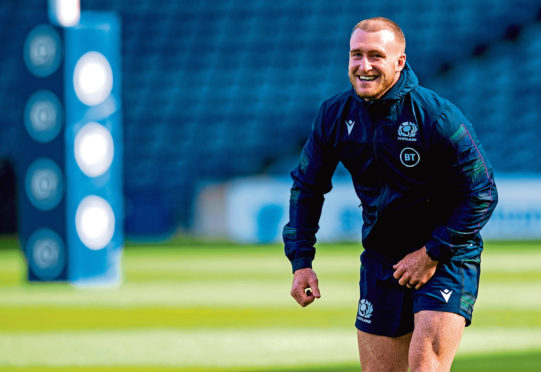Deep in the bowels of the Yokohama Stadium, the mood was already low. Scotland had just exited the World Cup, deservedly at the hands of the hosts, and Gregor Townsend was summing up the tournament for a huddle of Scottish pressmen.
The head coach was quick to remind those gathered that the Six Nations was just over two months away. Eyes rolled collectively. After two months on the road, starting another campaign so soon wasn’t what we wanted to hear.
Life comes at you fast. Townsend will name his championship squad and captain next Wednesday, and we’ll see just how much of a full stop Japan was.
Three players have “officially” announced their international retirements – two former captains in Greig Laidlaw and John Barclay, and the prolific scoring wing Tommy Seymour.
We don’t yet know those who have “been“ retired. Townsend has somewhat bitter memories of this scenario himself, discarded by Matt Williams after the 2003 World Cup when he wanted to play on.
The way he talked after the Japan game suggested he wasn’t for “imposing” retirements on players. If they’re the best available, results in the Six Nations are important enough that it doesn’t make sense to immediately disregard players who wouldn’t make the next World Cup in France in 2023.
So onfield personnel will see limited change. Off-field, there are big changes with Steve Tandy replacing the departing Matt Taylor as defence coach, Pieter de Villiers the new scrum coach, and Danny Wilson in his last campaign before moving to the Glasgow Warriors.
De Villiers’ deal is only for this championship, and while not confirmed, it seems Tandy’s may be as well.
So we have an overhaul of the off-field team right now, and potentially another at the end of the Six Nations – maybe including the head coach.
But the time for discussing that is when the results start to feed in. At the moment, here are the biggest questions for Townsend heading into the opening game in Dublin on February 1.
A new captain?
What do the 2011 and 2019 World Cups have in common for Scotland? Obviously, they didn’t reach the quarter-finals in both. But also, in those two tournaments the captain announced pre-tournament was dropped for a pivotal pool game.
Al Kellock didn’t play in the loss to Argentina in Wellington, while Stuart McInally was left out of the Japan game in Yokohama.
McInally took the dispiriting defeat to Ireland hard, clearly mortified that the team had played so listlessly and hadn’t responded to his leadership. Given extra time off after Japan, he’s not outplayed Fraser Brown since coming back.
But with Laidlaw and Barclay retired, the question seems to be: who else?
Townsend could go in a different direction entirely. Grant Gilchrist maybe, but with Richie Gray indicating he’s available again, Gilko might not be an automatic choice.
There are few automatics in the Scotland squad these days. One is Finn Russell, but I wouldn’t burden him with more responsibility. Jonny Gray has some captaincy experience, but not that successfully.
Hamish Watson is an automatic and one of the team leaders, but he has no real captaincy experience at any level.
The most prominent senior player now is Stuart Hogg. He’s the longest serving member of the leadership group, he has authority of action, and no-one bar Laidlaw is prouder of having the thistle on his chest,
Full-back captains are not fashionable in the modern game. But with Brown/McInally, Watson and Gilchrist or the Grays as his brains trust, why not Hoggy?
What’s missing?
Scotland are reasonably well-served at most positions: Laidlaw, Barclay and Seymour’s absence is already covered.
We’ve got two, gameplan-fitting scrum-halfs in George Horne and Ali Price. There are plentiful options in the back row, and four quality players for the back three.
Where are the gaps? A bit of extra bulk and lineout presence would be catered for by the return of Richie Gray, as Scott Cummings develops.
Zander Fagerson is surely now ahead of WP Nel at tight-head. Loose-head is an issue, with Allan Dell not an outstanding No 1 in our great tradition. Pierre Schoeman is the best playing in Scotland, but still two years away from qualifying.
Adam Hastings should now be the back-up for Russell, leaving just centre.
Scotland didn’t have nearly enough threat from the position in Japan, and in the key games defensively it didn’t look great. Sam Johnson was decent, but he needs a partner even if he holds on to 12.
Huw Jones and Matt Scott are in renaissance, but both have had their defensive issues in the past. Mark Bennett looks sharp, while Rory Hutchison has been lighting it up for Northampton.
Re-finding the attacking verve from 2018 is the key for me. Centre, linking between stars Russell and Hogg, is where it may be found,.
